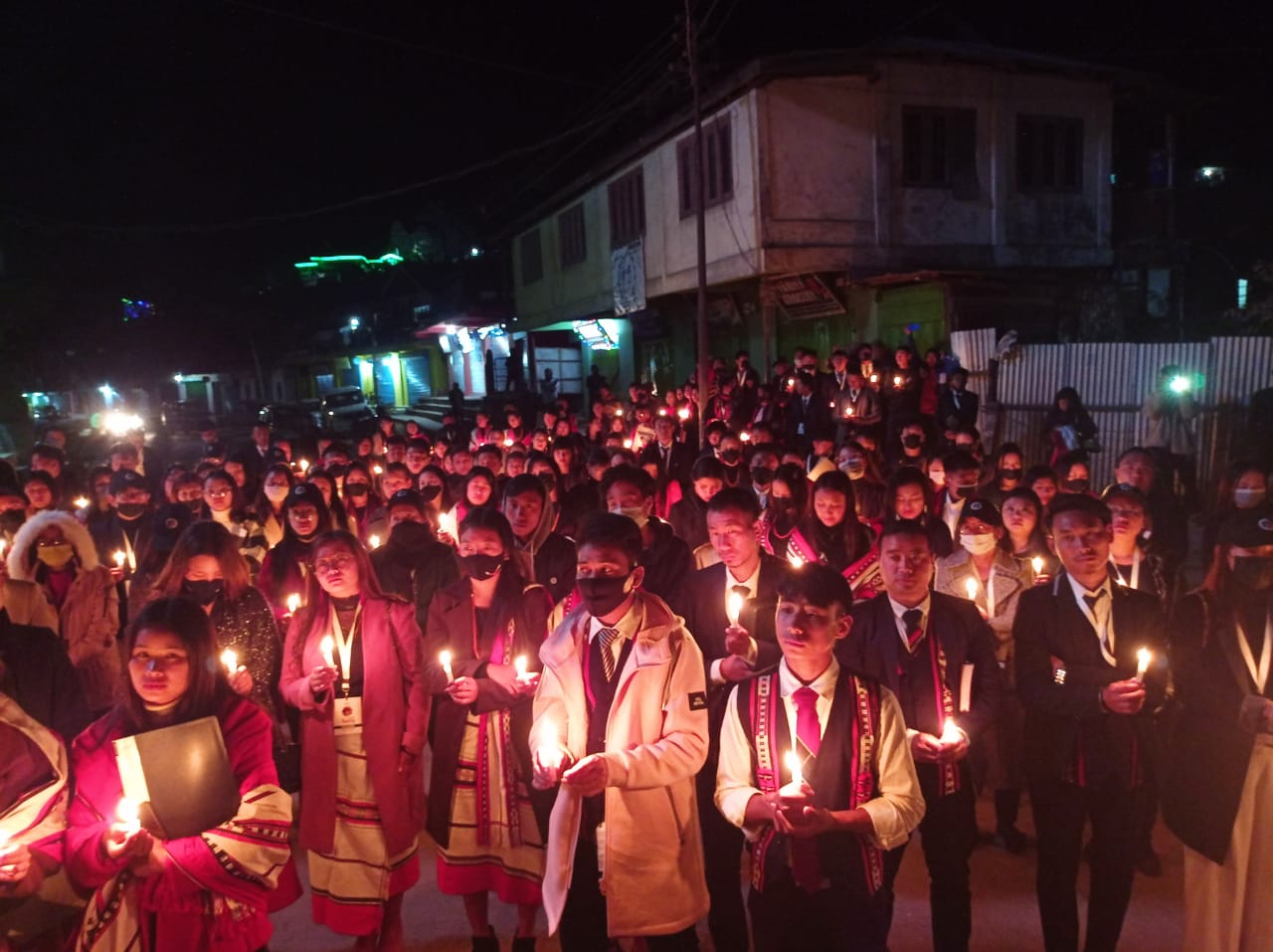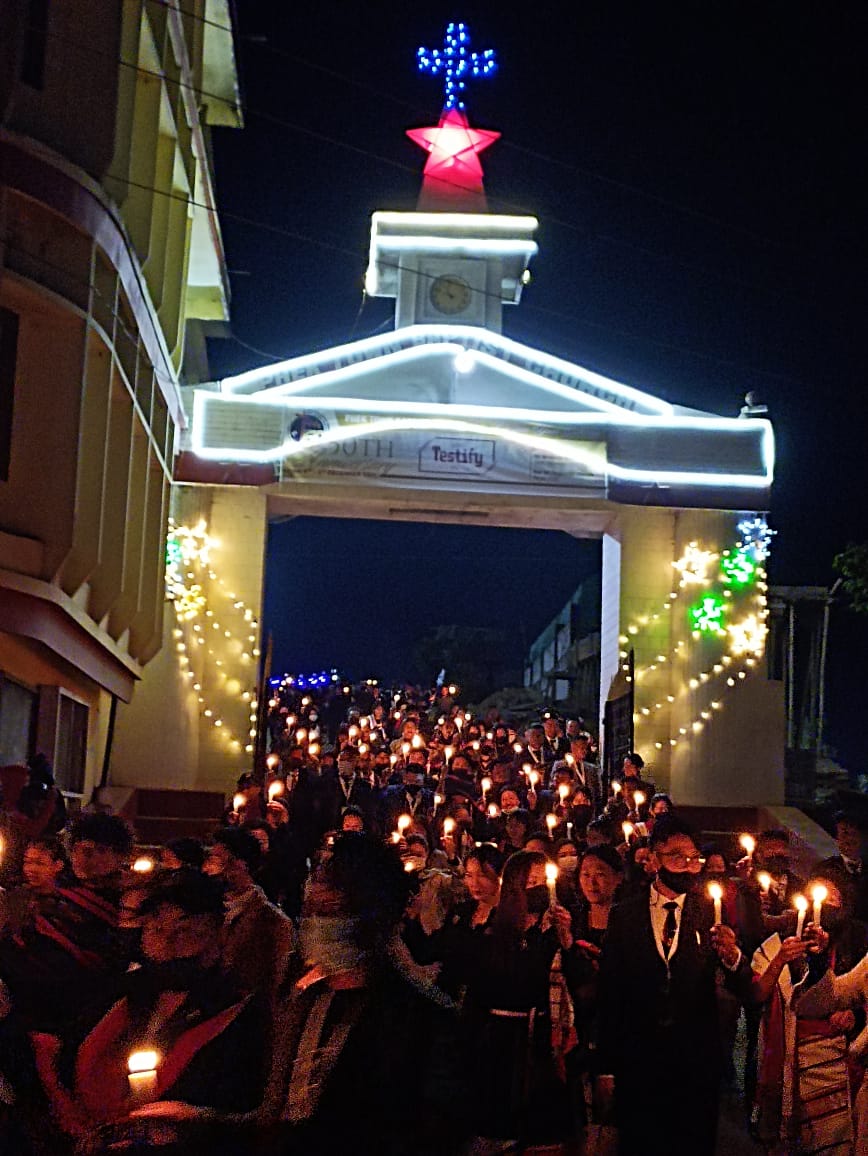The Indian Army’s elite 21 Para Special Forces battalion has been accused of killing more than a dozen civilians in Nagaland in the country’s northeastern region. The same unit was involved in a highly controversial surgical strike in Myanmar in 2015.
MUST-READ: India’s 1st Nuclear Submarine INS Chakra Was A Highly Classified Project; Crew Recount Gruelling Russian Experience
Police File FIR Against Army Unit
In a shocking development, army commandos from the 21 Para SF “blankly opened fire” on multiple civilians in Oting village in Mon district, near the India-Myanmar border, NDTV reported quoting a first information report (FIR) filed by the state police.
It said 13 villagers and a soldier were killed on December 4 as a counter-insurgency operation went horribly off-script. The following day witnessed the death of a civilian at the hands of the Assam Rifles, a paramilitary force under the Ministry of Home Affairs when an angry mob stormed into their camp in Mon town and set a part of their camp on fire.
The FIR filed by the Nagaland police against the army unit alleges that the “intention” of security forces was to “murder and injure civilians”.

“It is to be noted that at the time of the incident there was no police guide nor security forces did make requisition to the police station to provide police guide for their operation. Hence it is obvious that the intention of security forces is to murder and injure civilians,” the FIR by the state police read.
“At around 1530 hours, coal mine laborers of Oting village were returning to their native village Oting from Tiru in a vehicle Bolero picked up. On reaching Longkhao between Upper Tiru and Oting village, security forces blankly opened fire at the vehicle without any provocation resulting in the killing of many Oting villagers and seriously injuring many others (sic),” the FIR added.
MUST-READ: Did French Rafale Jets ‘Kill’ UAE’ F-35 Stealth Fighter Deal As It Looks To Acquire The ‘Ultimate Warplane’
The influential Naga Students’ Federation (NSF) has called a total shutdown from morning 6 am to 12 noon across the state on December 6 in protest against the killing of civilians. The Eastern Nagaland Peoples’ Organisation (ENPO) has also called a dawn-to-dusk shutdown.
Meanwhile, the Mon district administration has issued prohibitory orders under section 144 of the Criminal Procedure Code (CrPc), restricting public gathering of more than five people, and movement of all vehicles of non-essential nature, including commercial vehicles.
The Army Regrets ‘Unfortunate Loss Of Lives’
The Indian Army issued a statement in which had expressed deep regrets over the “unfortunate loss of lives” in a security operation that went awry. The army’s statement added that the matter will be investigated at the “highest level”.
The Army said, acting on a tip-off on the likely movement of insurgents, it had planned an ambush on the Tiru-Oting road. “The incident and its aftermath is deeply regretted. The cause of the unfortunate loss of lives is being investigated at the highest level and appropriate action will be taken as per the course of law,” the army statement read.

The Mon area is known to be a stronghold of the Naga rebel group National Socialist Council of Nagaland or NSCN (K), which basically operates from its base in Myanmar.
The incident took place when the state was celebrating ‘Hornbill Festival’, an annual event that showcases a mélange of cultural displays. Chief Minister Neiphiu Rio condoled the loss of lives and appealed for calm, adding a special investigating team (SIT) will probe the matter.
‘Arrest The Accused’, Says Rights Group
The Rights and Risks Analysis Group (RRAG), a Delhi-based human rights organization, called for immediate arrest of the accused personnel of the Special Forces (21st Para commandos) named in the FIR filed by the Nagaland Police.
“Insurgents traveling in a pick-up truck is unheard of and it is nothing but a plain massacre of the civilians. Since the FIR names the accused of the mass murder of the civilians, the law must take its own course and the accused ought to be handed over to the police for the offense of murder,” said Suhas Chakma, Director of the Rights and Risks Analysis Group (RRAG).

“Otherwise, mere statements of anguish or formation of Special Investigation Team or Court of Inquiry are simply not adequate to assuage the outrage against the massacre. The law must be seen to being applied equally to all murder accused,” he added.
“The central forces operate under the command of the local police under the Armed Forces Special Powers Act (AFSPA) and they are deployed to aid the civil administration. The central forces cannot operate on their own and in this case, the FIR makes it absolutely clear that the local police were not informed by the central forces. Justice must be established through a fast-track trial,” Chakma maintained.
What Army Veterans Say
Colonel Rajinder Singh Kushwaha (retired), who was involved in counter-insurgency operations in the Northeast in the past, and has written a book, The ULFA Insurgency in Assam, shared his view.
“Mon district is notorious for NSCN activities. I operated in that area in 1981. I am sure, some information was fed to soldiers on the insurgent movement. It could have been a trap or deliberate misinformation. Terrorists do not move around with head-bands.
“Who says that civilians were hunters with weapons? Why couldn’t they be insurgents in the garb of hunters or (civilians)? Local police can misguide this under local pressure. It happens in counterterrorism operations. Local police are always compromised.”
Another veteran who spent a lifetime in the Special Forces, raised questions about the state police’s account, “What intrigues me is where was the soldier killed. If it was at the ambush site, then [why] the civilians were armed?”
2015 Surgical Strikes In Myanmar
Tracing their Maratha heritage, the 21 Para Special Forces, dubbed the Waghnakhs, is one of the Indian Army’s elite military units specializing in jungle warfare, doing operations beyond the mandate or capabilities of conventional forces.
“They operate like a scalpel and not a broadsword,” often working in small cohesive teams with minimal support, even behind enemy lines in operations the Indian government may like to maintain plausible deniability in.
Locals in Kohima ask armed forces to “go back,” post-killing of 13 civilians in a botched operation by para commandos in Mon district on Saturday. Video courtesy- local resident. #AFSPA #nagaland pic.twitter.com/xPJvVXUPEZ
— Vijaita Singh (@vijaita) December 6, 2021
The highly trained outfit has operated extensively in the northeast. The 21 Para Special Forces came to the limelight after its actions in the highly controversial ‘Operation Hot Pursuit’, more popularly referred to as the 2015 surgical strikes in Myanmar.
The purported cross-border strikes were in response to an ambush on an army convoy by northeastern militants, which resulted in the death of 18 Indian Army soldiers in Manipur on June 4, 2015. The “surgical strikes” inside Myanmar soil were questioned by insurgency experts.
“The claim that that the Indian Army had eliminated the militants involved in the attack on 9 June is also unlikely to be true for two reasons. To begin with, it would be highly difficult for the authorities to ascertain the details and identify the cadres who had been killed within days of the operation,” senior journalist Rajeev Bhattacharyya, who has extensively covered the insurgency in India’s northeast wrote in a piece for The Caravan.
“Furthermore, most insurgent groups devise an escape strategy and route in advance before a strike such as the one that was executed against the Indian army on 4 June. The functionary from a rebel group told me that the insurgents involved in the attack had crossed the border within hours and were deep inside a day later.
It is improbable, that such a group would hover so close to the border right after going into hiding,” Bhattacharyya, author of Rendezvous With Rebels: Journey to Meet India’s Most Wanted Men, added.
- The author can be reached at aritrareporter@gmail.com
- Follow EurAsian Times on Google News




